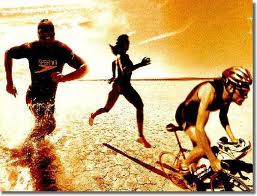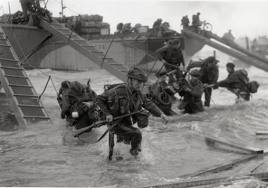“In my preparation for the race I am focusing on what I can influence for top performance and letting the actual result of the race come as it will." — Ruthie Matthes
 I spend a lot of time training for events in my life both personally and professionally. I am a goal oriented person. I attribute much of the achieved success I have aimed for in my life to goal setting and surrounding myself with a supportive network to achieve those goals. I have thought how similar that is to those I see who are successful in their recovery processes from addiction. Nowhere in my life is that training more evident than in the endurance sports I engage in and the circle of endurance athletes I am privileged to observe and hang with.
I spend a lot of time training for events in my life both personally and professionally. I am a goal oriented person. I attribute much of the achieved success I have aimed for in my life to goal setting and surrounding myself with a supportive network to achieve those goals. I have thought how similar that is to those I see who are successful in their recovery processes from addiction. Nowhere in my life is that training more evident than in the endurance sports I engage in and the circle of endurance athletes I am privileged to observe and hang with.
I am not a natural athlete. Truth be known, “athlete” is a term I use loosely for demonstration purposes, only. Most endurance athletes I know have natural abilities to help them but it is still hard work for them to get to the finish line. Most people I see in successful recovery work hard to be successful. This observation is not meant to be a de-motivator, but an expectation for success. For those of us who train in endurance sports, it is not about the finish line. Endurance sports are an entire experience: putting your goals out there, committing to a training plan, camaraderie of a group going in the right direction, surrounding yourself with those who can support you through the tough times, race day, a sense of self-esteem for sticking to the plan, and – oh yeah – a finish line.
While I was on my bike recently I had these thoughts about the parallels of recovery and endurance training:
1. Share your goals and live transparently. I remember the first time I stated to a group of these accomplished friends that I was going to participate in a particular impossible goal/race event for me at the time. It was big for me, but many had done much more than my little goal. That didn’t matter. The issue was once I owned my goal to the group, I couldn’t back down. Putting that intention out there kept me motivated to be on task and also allowed others to help keep me accountable. The same is true for those entering recovery. Once you enter the hallways of a 12-step fellowship and pick up your first white chip you give yourself the gift of intention and the chance for a community of support. Once you decide to live a sober life, sobriety can only be helped by making that thought transparent to a group of people that can help you stay in training.
2. Have a group to support your goals and stay accountable. My group of endurance friends that I share my goals with don’t shame me if I fall behind. They offer me support for the journey. They help me stay on task by sharing things that have helped them when they struggle. They cheer me on. They believe in me when I don’t believe in myself. They share their own struggle and success which helps me gather things that I can incorporate into my own training.
3. Have a vision but stick to a plan. Successful people I know have a plan that guides them. In recovery one is advised to stick to “one day at a time”. I remember when I planned for my first 10K. As I began the training for it, I thought: There is NO WAY I can run 6.2 miles! I hear that from people in early recovery! “I can’t stop drinking forever” or “I can’t stop acting out, it is too hard”. You don’t have to run 26 miles out the door if you decide to do a marathon. Recovery doesn’t just happen. You have to begin with the process of sober first. You have to learn and build upon a foundation of sober while gaining skills to sustain the journey. You have to know where you are going with a vision and build slowly while sticking to sobriety (the training plan) every day. Sobriety each day, while learning skills and working a training plan, keeps one fit for the journey of recovery. Running 6.2 miles is a relatively easy endeavor for me these days but I am forever amazed at the beginning training plan process!
4. Have a relationship with others who have done what you are trying to do. Most endurance athletes I know not only surround themselves with a group of motivated people, but they create specific relationships with a coach to support their goals. The parallel for that in recovery looks like finding a therapist with specific professional knowledge to guide you toward your goals. They understand predictable pitfalls and safely guide you without putting too much on your plan all at once. Minimally, I suggest one finds a sponsor for accountability and support when the plan gets tough.
5. Avoid Bonk. By “bonk” I mean the cyclist’s term for “hitting the wall”. In recovery terms there is a term “Avoid H.A.L.T.” Never allow yourself to get overly hungry, angry, lonely or tired. HALT is when the addict is most primed to take over when you can no longer go on. It is a dangerous place to be as it does not allow you to continue your journey of recovery.
I wish you success for your goals. Live transparently, open yourself and your intentions to a group who can cheer you on, enjoy the camaraderie, stick to your plan, don’t lose sight of your vision….and enjoy a healthy sobriety! Life is not a race, but a journey to be enjoyed.

 Life, as they knew or thought it to be, changes in an instant. PTSD from the trauma continues as they lose so much in the transaction of the discovery invasion. The spouse of the addict loses their way, their orientation to life, and the things they thought that were, aren’t. They lose the feelings of specialness to their spouse that was felt in the marriage. It is a betrayal like no other. For the addict there are casualties, as well. The addict is often caught by a surprise attack. They are left to defend the territory of addiction. They are lost in a world of disorientation from the occupation of the addiction and the shame of being discovered. It is a difficult labyrinth for both sides of the war at this point. I have both spouses and addicts contact me in the aftermath of discovery. I can assure you it is painful and the wounds are severe for both soldiers in the opposing armies.
Life, as they knew or thought it to be, changes in an instant. PTSD from the trauma continues as they lose so much in the transaction of the discovery invasion. The spouse of the addict loses their way, their orientation to life, and the things they thought that were, aren’t. They lose the feelings of specialness to their spouse that was felt in the marriage. It is a betrayal like no other. For the addict there are casualties, as well. The addict is often caught by a surprise attack. They are left to defend the territory of addiction. They are lost in a world of disorientation from the occupation of the addiction and the shame of being discovered. It is a difficult labyrinth for both sides of the war at this point. I have both spouses and addicts contact me in the aftermath of discovery. I can assure you it is painful and the wounds are severe for both soldiers in the opposing armies. Disclosure is not just coming clean in confession after the discovery. Disclosure must be planned and executed as carefully as the Normandy Invasion was planned for. To haphazardly just rush in could be disastrous for the campaign of winning the war. Disclosure should be done purposefully with the skill of trained therapists with experience of how to structure disclosure for the maximum chance of success.
Disclosure is not just coming clean in confession after the discovery. Disclosure must be planned and executed as carefully as the Normandy Invasion was planned for. To haphazardly just rush in could be disastrous for the campaign of winning the war. Disclosure should be done purposefully with the skill of trained therapists with experience of how to structure disclosure for the maximum chance of success.